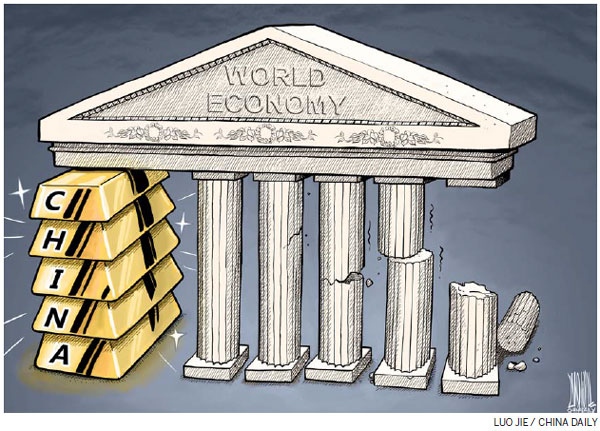Economic fundamentals still sound
(chinadaily.com.cn) Updated: 2015-10-27 10:04
Editor's note: China's economic slowdown has drawn global concern. Three experts with China's central planning body give their readings of China's economy. Excerpts:
The International Monetary Fund and other organizations have lowered their forecasts for global economic growth this year. Although China's economic growth is somewhat slower than the previous years, the economic growth of 6.9 percent in the third quarter is still relatively fast worldwide. The growth rate is much higher than not only the developed economies but also some emerging markets.
In 2014, China's GDP reached more than $10 trillion. On the basis of economic growth of 6.9 percent, the increment this year will be the equivalent of a medium-sized country's total economy. This year China has contributed about 30 percent to the world's economic growth, which continues to rank first in the world.
It's true that China's economy is facing significant downward pressures, from weak investment demand, slowing export growth, and serious overcapacity. However, China's economic development has entered a new normal and the new industrialization, urbanization, information technology and further agricultural modernization will release strong domestic demand. There is still great potential for economic development. As long as we take the initiative to adapt to the growth rate by changing the development mode and deepening structural adjustment and by further strengthening and improving macroeconomic regulation and the regulation of directional control, China's economy will continue to maintain long-term stable and healthy development. We have the confidence and the ability to complete the main objectives for this year and complete the tasks of economic and social development set out in the 12th Five-Year Plan (2011-15). This will give a good start to the 13th Five-Year Plan (2016-20).
Zhong He, an expert with the National Development and Reform Commission
- British finance minister upbeat on slowing China economy
- China economy enters 'new normal' eyeing 7% growth rate: G20
- Pressure & prospects: Micro view of China economy
- China economy loses more steam in April, more stimulus on the cards
- Fundamentals of China's economy remain unchanged: expert
- PBOC cuts interest rates to spur economy
- China leans on higher trade surplus to lift economy
- China kicks off innovation week amid sluggish economy
- China still a strong driver of global economy

I’ve lived in China for quite a considerable time including my graduate school years, travelled and worked in a few cities and still choose my destination taking into consideration the density of smog or PM2.5 particulate matter in the region.











